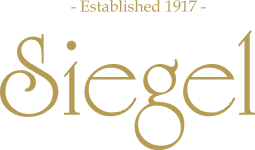At Siegel Leather, we’ve been supplying bookbinding leathers and specialty leathers to professionals for nearly a century. But in a marketplace where the term “full grain leather” is often used too loosely, it’s important to distinguish between traditional craftsmanship and modern commercial standards.
This article explains the true, classical definition of full grain leather, why it matters in bookbinding, and how our leathers continue to meet the highest standards for durability, workability, and historical authenticity.
What Is Classical Full Grain Leather?
Traditionally, full grain leather refers to only the top 5–10% of a tannery’s output, the finest hides that have:
- Had only the hair removed
- Not been altered more than 5% at the grain surface
- No mechanical grain manipulation, embossing, or heavy finishing
- No attempts to obscure or hide the natural texture of the grain
These hides are naturally beautiful and exceptionally rare. Altering them would be, as we often say, “like adding a mustache to the Mona Lisa.”
This definition has been used by Siegel Leather and our trading partners for over 100 years, and it remains the benchmark for true bookbinding leather suppliers who value quality over mass-market appeal.
The EU Definition: Why It Falls Short
In contrast, the European Union’s definition of full grain leather is far more lenient and allows nearly 100% of a tannery’s output to be classified as “full grain.” Under this version:
- The leather cannot be buffed
- But it can be fully pigmented, semi-aniline finished, embossed, plated, glazed, or grain-printed
- The grain surface may be completely disguised — raising serious questions about what lies beneath
Our concern is simple:
If the grain is completely covered, how can anyone be sure it hasn’t been buffed or altered?
That’s not full grain by any meaningful or traditional definition.
Why Classical Full Grain Matters in Bookbinding
For professional bookbinders, conservators, and collectors, classical full grain vegetable-tanned leather remains the gold standard.
It is:
- Highly receptive to gold tooling, blind tooling, and albumen work
- Ideal for paring and shaping
- Naturally durable and long-lasting
- Incredibly rare, and therefore valuable
Leathers that fail to meet this standard, particularly those manipulated under the EU’s broader definition should be priced significantly lower, given their compromised quality and reduced performance.
Leathers from Siegel That Meet the Classical Standard
Our selection of vegetable-tanned bookbinding leathers includes only hides that meet or exceed the traditional full grain definition.
Here are some of the top choices:
- SF Calf
- UK Calf
- Natural Sheepskin
- Natural Goat
- .5mm Veg Goat
- Smooth Historical Goat
- Capra Granulosa
- Sokoto™ Morocco
- Sokoto™ Traditional
- Genuine Levant
These are lab-tested, time-honored materials trusted by the world’s most discerning binders and leather suppliers.
Let’s Hear From You
Have questions about grain quality, tanning methods, or leather standards?
We’re happy to help. Whether you’re sourcing for library rebinding, fine editions, or restoration projects, we’re here for you.
Email: sales@siegelleather.com
Siegel Leather: A Tradition Built on Integrity
We are proud to be among the few remaining bookbinding leather suppliers in the world who hold to the classical definition of full grain leather. Explore our full catalog of specialty leathers trusted by artisans, historians, and institutions alike.

